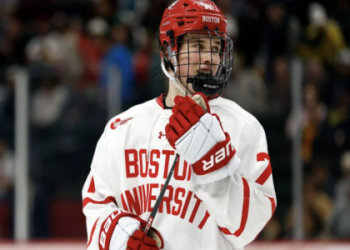So, I decided to take a bit of a dive into some hockey history, specifically looking into Mark Fusco. You know, sometimes you just get these urges to understand a bit more about players from a different era, beyond the usual highlight reels you might stumble across. It wasn’t for any big project, more like a personal curiosity, a little practice in digging up stories.
I started off pretty simply. Fired up my computer, went to my usual search spots. Typed in “Mark Fusco hockey” and began sifting through what came up. Lots of the standard stuff, you know, his college career at Harvard, winning the Hobey Baker Award – which is a huge deal – his time with the Whalers, and playing in the Olympics. Basic facts, which are good, they lay the groundwork.
But I wanted to go a bit deeper than that. I was trying to get a feel for the player, the person, what it was like watching him back then. My “practice” here was to try and find more than just stats and award lists. I was hunting for anecdotes, old interviews, maybe some detailed game reports that really captured his style or impact beyond the box score.
So, I started digging into online newspaper archives. Man, that can be a rabbit hole. You find some interesting bits and pieces, like old articles talking about his incredible skating or his smart plays. I spent a good few evenings just scrolling through digital microfilm, trying to piece things together. It’s a slow process, not like today where you can find a dozen articles and videos on a current player in minutes.
One thing I really tried to do was find footage. Good, clear footage. That was tougher. You get snippets here and there, often grainy. It’s not like now with everything being recorded in HD and available on demand. Back then, a lot of college games, even some pro stuff, just wasn’t archived in a way that’s easily accessible to your average Joe just poking around online.
What I found during this whole process was pretty interesting, not just about Mark Fusco, but about how we remember athletes from that pre-internet boom era. There’s a lot of information, for sure, if you know where to look and you’re patient. But getting that real, vivid sense of a player, the kind of detail fans today take for granted, that takes some serious effort. It’s like a different kind of archaeology.
I managed to build up a pretty decent picture. I read about his leadership at Harvard, how much of an impact player he was at the collegiate level. It’s clear he was an exceptional talent. His decision to retire relatively early from pro hockey to pursue a business career also tells you something about him, I guess. Choices, right?
My little “practice” didn’t unearth some long-lost secret or anything dramatic. It was more about the process itself. The act of searching, of piecing together a story from scattered sources. It made me appreciate the work historians do, and also how much of sports history can become a bit faded if we don’t actively try to keep the details alive.
In the end, I felt like I got to know a bit more about Mark Fusco, the hockey player. And, more importantly, I kind of flexed my research muscles. It was a good reminder that there’s always more to learn if you’re willing to put in the time. It’s not always laid out perfectly for you. Sometimes you gotta do the digging yourself. And that, I think, was the real takeaway from this little endeavor.















